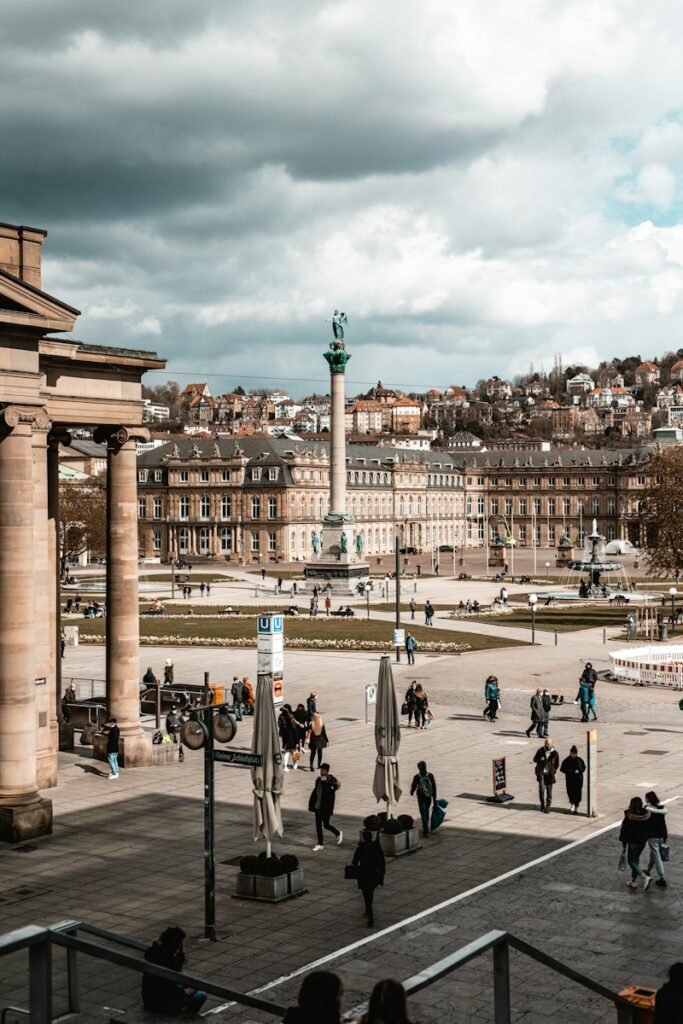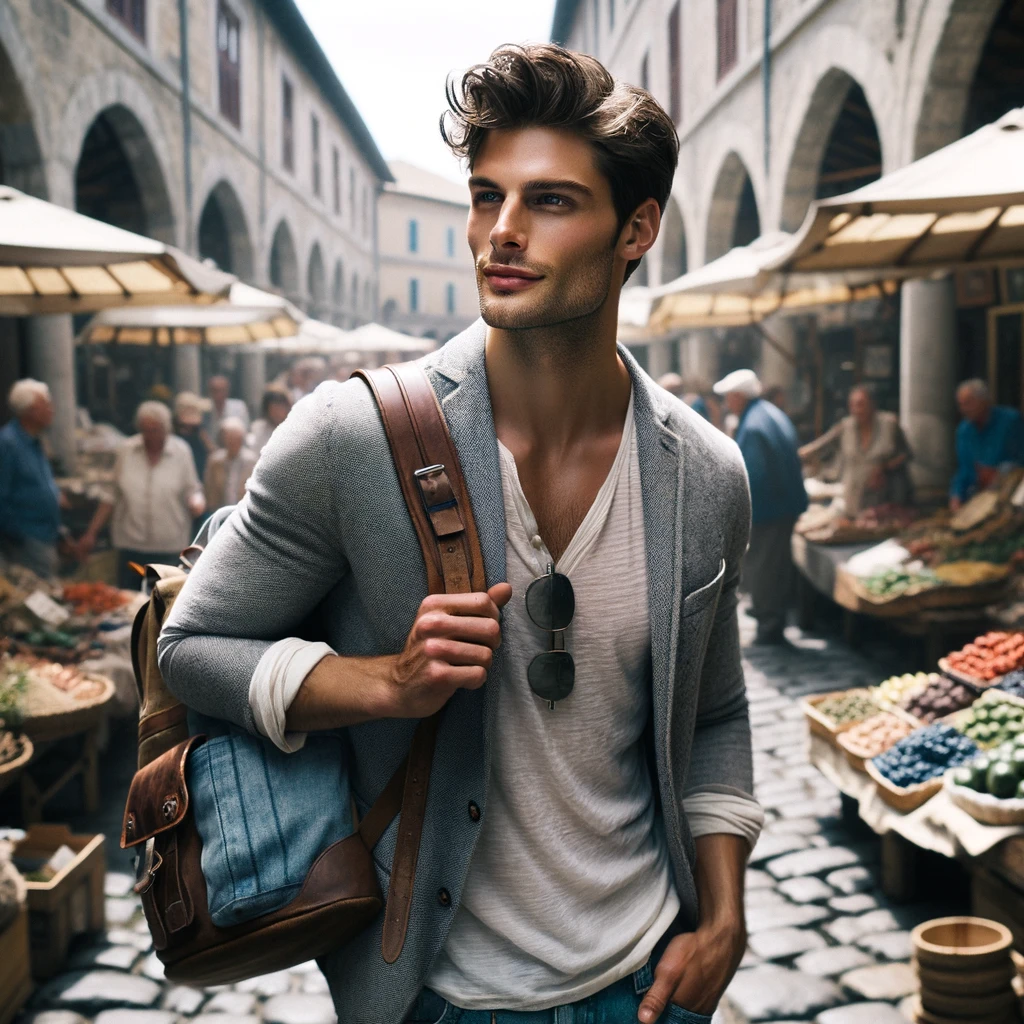Nestled in the heart of Baden-Württemberg, Stuttgart emerges not just as an industrial powerhouse but as a vibrant tapestry of culture and history. This city, with its verdant valleys and architectural marvels, invites the curious and the cultured to delve into a world of discovery. Among its most cherished treasures are the museums, each a portal to a different time, thought, or technological marvel. Let us embark on a journey through Stuttgart’s finest museums, where history, art, and innovation converge.

Table of Contents
9 Best Museums In Stuttgart To Check Out
Mercedes-Benz Museum
Upon approaching the Mercedes-Benz Museum, one is immediately struck by its architectural boldness—a double helix that spirals upwards, mirroring the DNA of automotive innovation that lies within. This museum is not merely a showcase of cars; it’s a journey through time, where each curve and engine tells a story of progress, of dreams realized, and of the relentless pursuit of excellence.
The exhibits within are meticulously curated, presenting a timeline that begins with the birth of the automobile in 1886. Visitors are taken on an odyssey from the earliest motorized carriages to the sleek precision of modern-day Formula 1 racers. The museum doesn’t just display cars; it brings to life the era they were born in, with immersive installations that recreate historical moments, inviting guests to step into the past.
Interactive elements abound, engaging visitors of all ages. From hands-on workshops where the mysteries of automotive engineering are unraveled, to multimedia presentations that capture the imagination, the museum ensures that the legacy of Mercedes-Benz is experienced in a way that is both educational and profoundly inspiring.
Porsche Museum
The Porsche Museum stands as a testament to the vision of Ferdinand Porsche, housed within an avant-garde structure that seems to defy gravity. This architectural marvel, much like the vehicles it celebrates, combines form and function in a dance of dynamic tension and elegance. It’s a space that not only showcases cars but elevates them into the realm of art.
Inside, the museum chronicles the evolution of Porsche from its inception to its current status as a titan of the automotive world. The exhibit traces the lineage of design and innovation through a fleet of pristine vehicles, each marking a milestone in Porsche’s quest for automotive perfection. Notable are the early designs of the Volkswagen Beetle, the timeless elegance of the 911, and the technological marvels that have dominated racetracks around the globe.
Beyond the cars, the museum offers a glimpse into the ethos of Porsche. Interactive exhibits allow visitors to explore the engineering and design principles that underpin the brand, while factory tours offer a behindy-the-scenes look at the craftsmanship and precision that define Porsche vehicles. It’s an immersive experience that captures the spirit of speed and the artistry of automotive design.

Staatsgalerie Stuttgart
The Staatsgalerie Stuttgart is a beacon for art lovers, its façade a blend of neoclassical and postmodernist architecture that hints at the diversity of its collection. The museum is a journey through the art history of Europe, where each room and gallery unfolds like a chapter in a vast, visual narrative.
The Alte Staatsgalerie transports visitors to the Renaissance, Baroque, and Romantic periods, with masterpieces by artists who have shaped the course of art history. It’s a space where the works of Rubens, Rembrandt, and Canaletto hang in quiet majesty, their canvases still speaking with vibrant eloquence across the centuries.
In contrast, the Neue Staatsgalerie, designed by the acclaimed architect James Stirling, is a playground of modern and contemporary art, where the avant-garde is celebrated and questioned. Here, the works of Picasso, Klee, and Matisse mingle with contemporary installations and multimedia pieces, challenging visitors to see the world anew. The museum not only showcases art; it fosters a dialogue between the past and the present, inviting visitors to engage with questions of beauty, meaning, and the role of art in society.
Linden Museum
The Linden Museum stands as a gateway to the cultures of the world, nestled in the heart of Stuttgart. This ethnological museum is a celebration of humanity’s diversity, offering a rich tapestry of artifacts and exhibitions that span continents and centuries. Each exhibit within the Linden Museum is a portal to another place and time, offering insights into the ways of life, beliefs, and artistic expressions of peoples from across the globe.
One of the museum’s highlights is its impressive collection of Asian art and artifacts, where ancient traditions are brought to life through exquisite pieces of craftsmanship. From intricately carved Indian temple reliefs to delicate Japanese kimonos, each item tells a story of cultural heritage and artistic endeavor. The museum also offers a deep dive into the vibrant cultures of Africa, with exhibits showcasing everything from ceremonial masks to everyday objects, revealing the continent’s rich artistic and cultural landscapes.
The museum is not just about observation; it’s about engagement. Interactive exhibits and educational programs invite visitors to delve deeper into the stories behind the artifacts, fostering a sense of connection and understanding across cultural divides. The Linden Museum serves as a reminder of the shared humanity that binds us all, despite the vast diversity of our expressions and experiences.
Württemberg State Museum in the Old Castle
Housed within the historic walls of Stuttgart’s Old Castle, the Württemberg State Museum is a journey through the ages. This museum is a treasure trove of history, where the past is preserved and presented with care and reverence. From prehistoric artifacts to medieval treasures, the museum offers a comprehensive look at the cultural and historical evolution of the region.
The museum’s collection of ancient art and artifacts is particularly noteworthy, with pieces dating back to the time of the Celts and Romans. These artifacts provide a glimpse into the daily lives, beliefs, and artistic achievements of the region’s early inhabitants. The medieval collection is equally impressive, featuring illuminated manuscripts, ornate jewelry, and regal attire that speak of the opulence and sophistication of the era.
But the Württemberg State Museum is more than a collection of objects; it’s a narrative of resilience, tradition, and transformation. Special exhibitions and educational programs breathe life into the artifacts, connecting the dots between the past and the present. The museum stands as a guardian of history, inviting visitors to explore the depths of time and to reflect on the journey of humanity through the ages.
Kunstmuseum Stuttgart
The Kunstmuseum Stuttgart, with its striking glass cube design, is a beacon of modern and contemporary art in the city. This museum is not just a space for the exhibition of art; it is a platform for dialogue, innovation, and exploration. The museum’s collection, which focuses on the art of the 20th and 21st centuries, is a vibrant testament to the creative spirit of the times.
The museum’s dedication to Swabian artists offers a unique insight into the region’s contribution to the art world, with works by Otto Dix and Willi Baumeister taking center stage. These pieces, rooted in the tumultuous history and rich cultural landscape of the region, offer a profound exploration of identity, conflict, and beauty.
Beyond its permanent collection, the Kunstmuseum Stuttgart is renowned for its dynamic program of temporary exhibitions. These exhibitions, often curated in collaboration with international artists and institutions, bring fresh perspectives and cutting-edge works to Stuttgart, making the museum a hub of contemporary artistic discourse. The Kunstmuseum is not just a place to view art; it’s a place to experience the pulse of the artistic avant-garde, where every visit is an encounter with the new and the now.
Weissenhof Museum
Perched within the architectural symphony of the Weissenhof Estate, the Weissenhof Museum serves as a testament to the modernist movement that swept through Europe in the early 20th century. This museum is not merely a collection of objects but a living, breathing space where the ideals of functionalism, simplicity, and clarity in design are manifested in concrete and glass.
The estate itself, with contributions from luminaries such as Le Corbusier and Ludwig Mies van der Rohe, stands as a bold declaration of a new era in architectural thought, one that sought to redefine the relationship between space, human, and environment. The museum, nestled within this avant-garde community, offers an intimate look at the principles of the International Style, exploring its roots, its aspirations, and its enduring influence on contemporary architecture.
Visitors to the Weissenhof Museum are invited to wander through this historic enclave, to dwell within its spaces, and to contemplate the revolutionary ideas that once challenged the conventions of the time. It’s an immersive experience that not only educates but also inspires, urging us to consider the possibilities of design in shaping a better, more harmonious world.
Stuttgart Art Museum (Kunstmuseum)
The Stuttgart Art Museum, a dazzling edifice of glass and concrete, stands as a beacon of artistic exploration in the city’s heart. This museum, with its focus on Swabian Impressionism and 20th-century art, offers a captivating journey through the vibrant landscape of modern art, where color, form, and emotion collide in a kaleidoscope of visual expression.
Within its luminous galleries, visitors are treated to an exquisite collection of works by artists who have left an indelible mark on the art world. From the poignant expressions of Otto Dix to the abstract explorations of Willi Baumeister, the museum presents a narrative of artistic evolution, of the relentless pursuit of expression that defines the modern era.
The Kunstmuseum is more than a repository of art; it’s a space where the dialogue between artist and observer is nurtured, where the boundaries of creativity are expanded, and where the spirit of innovation is celebrated. Each visit is an invitation to engage with the art, to find personal meaning in the brushstrokes and compositions, and to leave with a deeper appreciation for the transformative power of artistic endeavor.
House of History (Haus der Geschichte)
The House of History stands as a guardian of memory, a place where the past is not merely recalled but deeply felt and understood. Focused on the post-1945 era in Baden-Württemberg, this museum offers a profound look at the events, people, and decisions that have shaped the modern landscape of the region and beyond.
Through interactive exhibits and multimedia installations, the museum brings history to life, connecting visitors with the personal stories and pivotal moments that define the contemporary era. It’s a place where history is made tangible, where visitors can trace the threads of the past as they weave through the fabric of the present.
The House of History is more than a museum; it’s a forum for reflection and dialogue, where the complexities of history are explored with nuance and empathy. It invites us to consider our place in the ongoing narrative of humanity, to learn from the past, and to carry those lessons forward into the future.
In the heart of Stuttgart, these museums stand as pillars of culture and knowledge, each offering a unique lens through which to view the world. From the avant-garde halls of the Weissenhof Museum to the reflective spaces of the House of History, Stuttgart’s museums offer a rich tapestry of experiences that beckon to be explored. As we wander through these repositories of art, innovation, and history, we are reminded of the enduring power of the human spirit to create, to express, and to understand the world in all its complexity and beauty.
